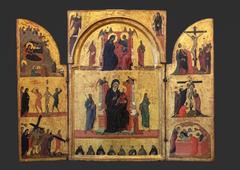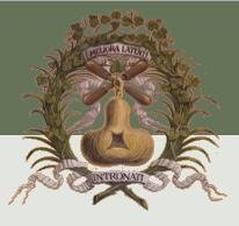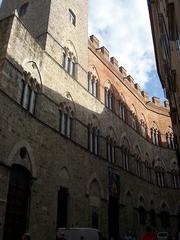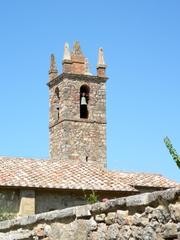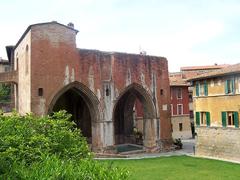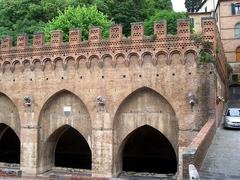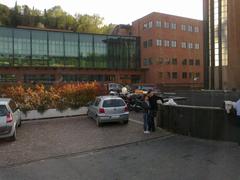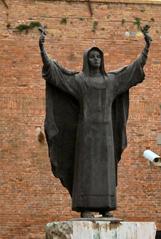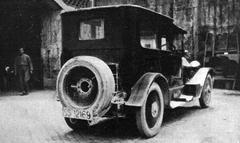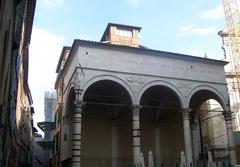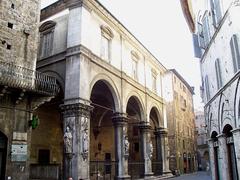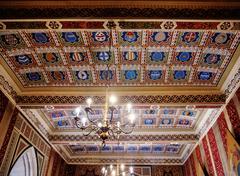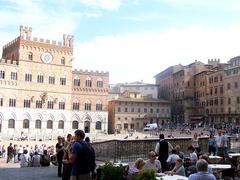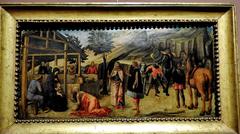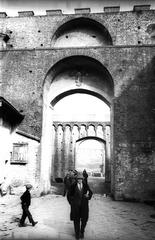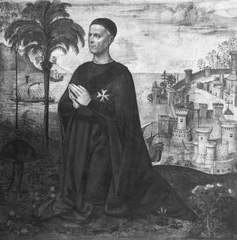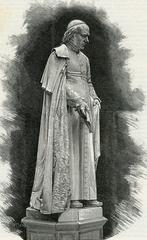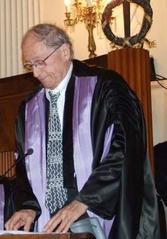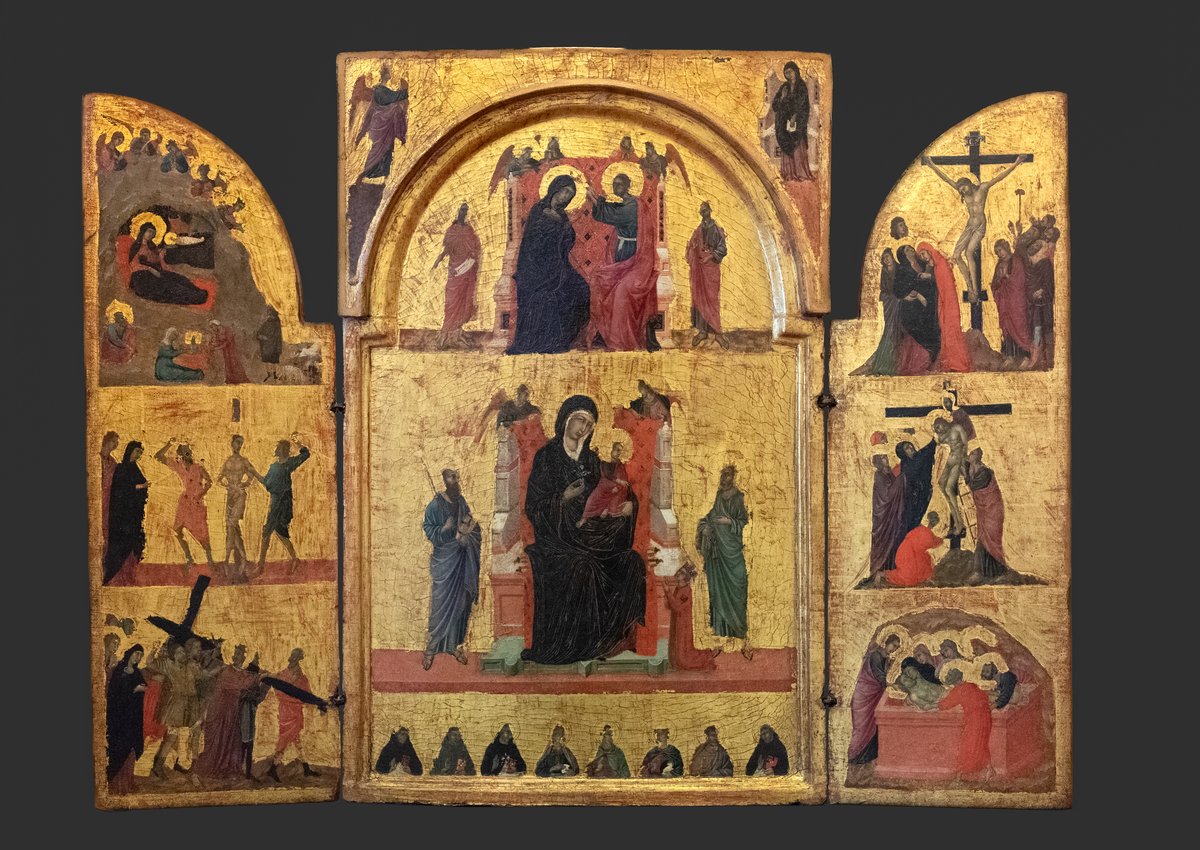
Complete Guide to Visiting Pinacoteca Nazionale di Siena in Siena, Italy
Publication Date: 31/07/2024
Introduction to Pinacoteca Nazionale di Siena
The Pinacoteca Nazionale di Siena is a cornerstone of cultural and artistic heritage in Siena, Italy. Located in the historic Palazzo Buonsignori and Palazzo Brigidi, the museum showcases the evolution of Sienese art from the 13th to the 17th centuries. Officially established in 1932, its collection has been carefully curated through acquisitions and donations, reflecting the rich traditions of the Sienese School (Discover Tuscany). The museum’s setting in the Palazzo Buonsignori, with its 19th-century neo-medieval facade, adds an extra layer of historical ambiance, making it a must-visit for art enthusiasts and history buffs alike.
The museum is renowned for its extensive collection of works from the Sienese School of painting, which flourished between the 13th and 15th centuries. This school is distinguished by its unique style, characterized by elegant figures, intricate details, and extensive use of gold leaf backgrounds known as “fondo oro.” Unlike the Florentine school, which focused on naturalism and spatial representation, Sienese art emphasized decorative beauty and spiritual themes (Discover Tuscany). Key artists such as Duccio di Buoninsegna, Simone Martini, and the Lorenzetti brothers are prominently featured, offering visitors a deep dive into the artistic innovations of the period.
Beyond its historical significance, the Pinacoteca Nazionale di Siena serves as a vital educational resource. It provides a comprehensive overview of the city’s artistic evolution, making it an essential part of experiencing Siena’s cultural heritage. Whether you’re an art aficionado or a casual visitor, the museum offers a unique and enriching experience, free from the crowds that often accompany major tourist attractions (Discover Tuscany).
Contents Overview
- History and Significance of Pinacoteca Nazionale di Siena
- Introduction
- Origins and Establishment
- The Sienese School of Painting
- Key Artists and Masterpieces
- Duccio di Buoninsegna
- Simone Martini and the Lorenzetti Brothers
- The Golden Age of Sienese Art
- The Renaissance and Beyond
- 15th Century
- 16th and 17th Centuries
- The Spannocchi-Piccolomini Collection
- Visitor Information
- Ticket Prices and Visiting Hours
- Travel Tips
- Cultural and Educational Impact
- Visitor Experience
- FAQ Section
- Conclusion
History and Significance of Pinacoteca Nazionale di Siena
Introduction
The Pinacoteca Nazionale di Siena is one of Italy’s most treasured art museums, offering a deep dive into the rich artistic heritage of Siena. Housed in the historic Palazzo Buonsignori and Palazzo Brigidi, this museum is a must-visit for art enthusiasts and history buffs alike.
Origins and Establishment
Established officially in 1932, the Pinacoteca Nazionale di Siena’s collection had begun forming much earlier through various acquisitions and donations. The palaces themselves are architectural gems; Palazzo Buonsignori, with its 19th-century neo-medieval facade, adds a layer of historical ambiance to the museum’s setting (Discover Tuscany).
The Sienese School of Painting
The museum is renowned for its extensive collection of works from the Sienese School of painting, which flourished between the 13th and 15th centuries. This school is distinguished by its unique style, characterized by elegant figures, intricate details, and the extensive use of gold leaf backgrounds known as “fondo oro.” Unlike the Florentine school, which focused on naturalism and spatial representation, Sienese art emphasized decorative beauty and spiritual themes (Discover Tuscany).
Key Artists and Masterpieces
Duccio di Buoninsegna
One of the most significant figures in the Sienese School is Duccio di Buoninsegna. His works, such as the “Madonna dei Francescani,” are pivotal in understanding the evolution of Sienese art. This particular piece, located in room 4, showcases a blend of Byzantine influences and more naturalistic elements, reflecting the transitional nature of his work (Discover Tuscany).
Simone Martini and the Lorenzetti Brothers
Simone Martini and the Lorenzetti brothers, Pietro and Ambrogio, are other notable artists whose works are prominently featured in the museum. Martini’s altarpiece dedicated to Beato Agostino Novello, found in room 5, offers a glimpse into 14th-century Sienese life through its detailed narrative scenes. The Lorenzetti brothers’ contributions, particularly Ambrogio’s fresco cycle on “Good and Bad Government” in the Palazzo Pubblico, underscore the socio-political themes prevalent in their work (Discover Tuscany).
The Golden Age of Sienese Art
The second floor of the Pinacoteca Nazionale is dedicated to the Golden Age of Sienese art, spanning the 13th and 14th centuries. During this period, Siena was a major center of artistic innovation, rivaling Florence. The museum’s collection from this era includes large altarpieces adorned with gold, showcasing the technical prowess and aesthetic sensibilities of Sienese artists (Discover Tuscany).
The Renaissance and Beyond
15th Century
The 15th century marked a period of transition for Sienese art, as it began to incorporate Renaissance ideals while retaining its distinctive decorative style. Artists like Giovanni di Paolo, Sano di Pietro, and Sassetta continued to produce large altarpieces with golden frames, but with more naturalistic expressions. Francesco di Giorgio Martini, a true Renaissance man, is also represented in the museum. His works span various disciplines, including painting, sculpture, architecture, and engineering, reflecting the multifaceted nature of Renaissance artistry (Discover Tuscany).
16th and 17th Centuries
The first floor of the museum houses works from the 16th and 17th centuries, a period often overshadowed by the earlier masters. However, this era produced significant artists like Domenico Beccafumi and Giovanni Antonio Bazzi, known as Sodoma. Their works, though less renowned, offer valuable insights into the evolving artistic trends and the continued importance of Siena as a cultural hub (Discover Tuscany).
The Spannocchi-Piccolomini Collection
In addition to its core collection, the Pinacoteca Nazionale also features the Spannocchi-Piccolomini collection on the top floor. This collection includes works from the 15th and 16th centuries by both Italian and Northern European artists. Among the highlights is “San Girolamo” by Albrecht Dürer, a masterpiece that exemplifies the cross-cultural exchanges of the Renaissance period (Discover Tuscany).
Visitor Information
Ticket Prices and Visiting Hours
- Tickets: General admission is €8. Reduced rates are available for seniors, students, and groups. Free entry for children under 12 and residents of Siena.
- Visiting Hours: The museum is open from Tuesday to Sunday, 10:00 AM to 6:00 PM. Closed on Mondays and major public holidays.
- Accessibility: The museum is wheelchair accessible, with elevators available for visitors with mobility issues.
- Location: Via San Pietro, 29, 53100 Siena SI, Italy.
Travel Tips
- Nearby Attractions: While in Siena, don’t miss the chance to visit the nearby Siena Cathedral and the Piazza del Campo, both within walking distance from the Pinacoteca Nazionale.
- Best Time to Visit: To avoid crowds, consider visiting during the early hours on weekdays.
- Guided Tours: Guided tours are available and recommended for a deeper understanding of the collections.
Cultural and Educational Impact
The Pinacoteca Nazionale di Siena plays a crucial role in preserving and promoting the artistic heritage of Siena. It serves as an educational resource, offering visitors a comprehensive overview of the city’s artistic evolution. The museum’s layout, which encourages visitors to explore the collection in chronological order, enhances the educational experience by providing a clear narrative of the development of Sienese art (Discover Tuscany).
Visitor Experience
One of the unique aspects of visiting the Pinacoteca Nazionale is its relatively quiet atmosphere, as it is located away from the main tourist routes. This allows visitors to appreciate the artworks in a peaceful setting, free from the crowds that often accompany major tourist attractions. The museum’s thoughtful organization and detailed descriptions further enhance the visitor experience, making it accessible even to those who may not be experts in art history (Discover Tuscany).
FAQ Section
Q: What are the visiting hours for the Pinacoteca Nazionale di Siena?
A: The museum is open from Tuesday to Sunday, 10:00 AM to 6:00 PM. It is closed on Mondays and major public holidays.
Q: How much does it cost to visit the Pinacoteca Nazionale di Siena?
A: General admission is €8, with reduced rates available for seniors, students, and groups. Free entry is offered for children under 12 and Siena residents.
Q: Is the Pinacoteca Nazionale di Siena accessible for visitors with mobility issues?
A: Yes, the museum is wheelchair accessible, with elevators available for ease of movement.
Q: Are guided tours available at the Pinacoteca Nazionale di Siena?
A: Yes, guided tours are available and highly recommended for those seeking a deeper understanding of the collections.
Conclusion
The Pinacoteca Nazionale di Siena is not just a repository of art; it is a window into the rich cultural and historical tapestry of Siena. Its extensive collection, spanning several centuries, offers invaluable insights into the artistic achievements of the Sienese School and beyond. For anyone interested in art and history, a visit to this museum is an essential part of experiencing the cultural heritage of Siena. Don’t forget to check out other related posts and follow us on social media for more updates (Discover Tuscany).
Sources and Further Reading
- Discover Tuscany, 2024, Discover Tuscany
- Pinacoteca Nazionale di Siena, 2024, Pinacoteca Nazionale di Siena
- Visit Siena Official, 2024, Visit Siena Official
- Terre di Siena, 2024, Terre di Siena
